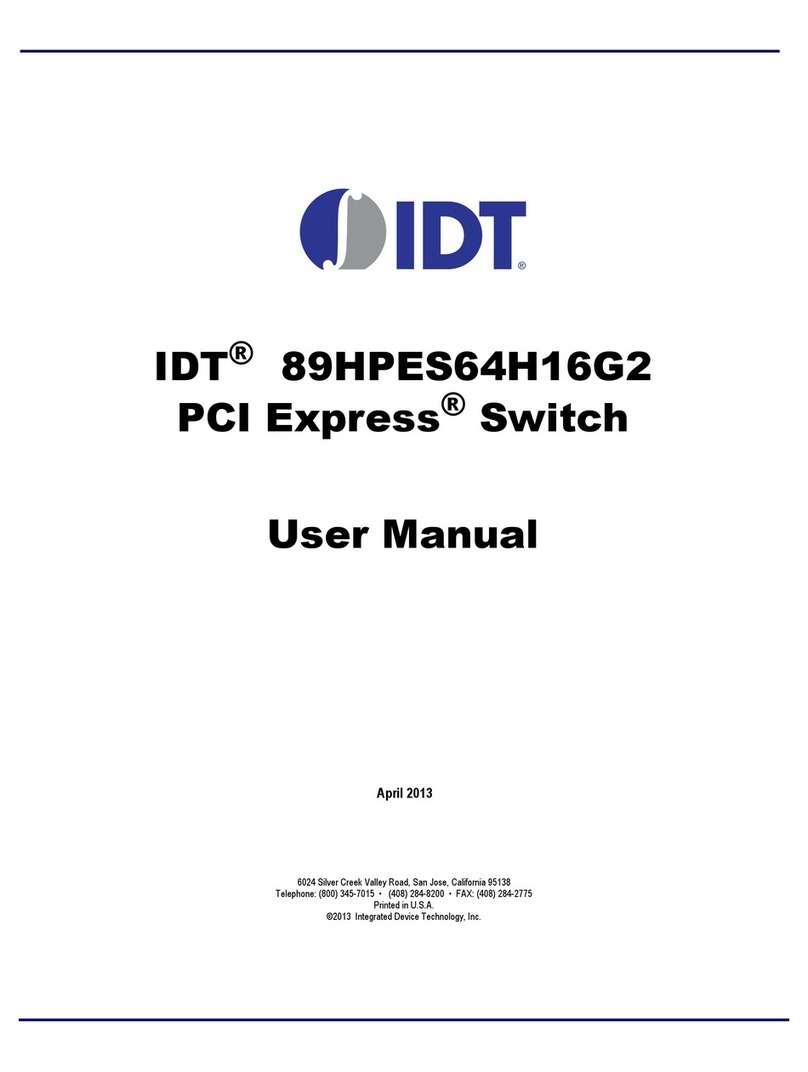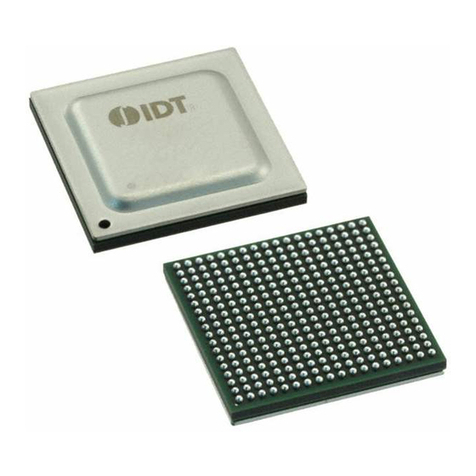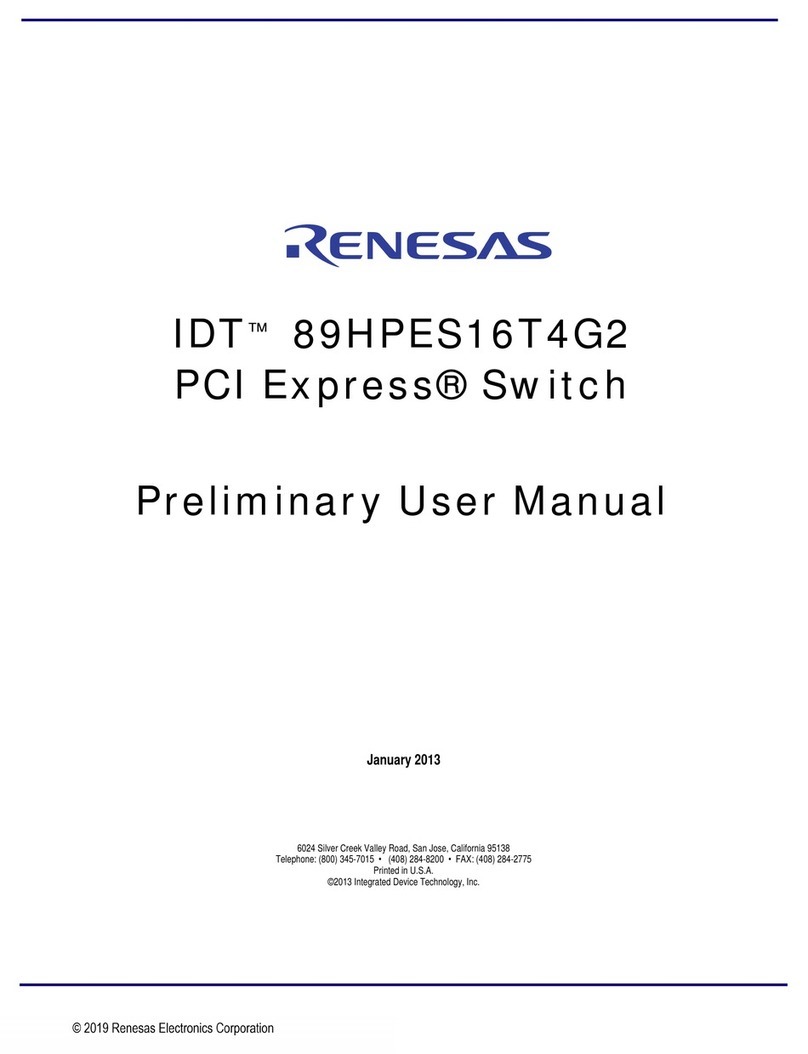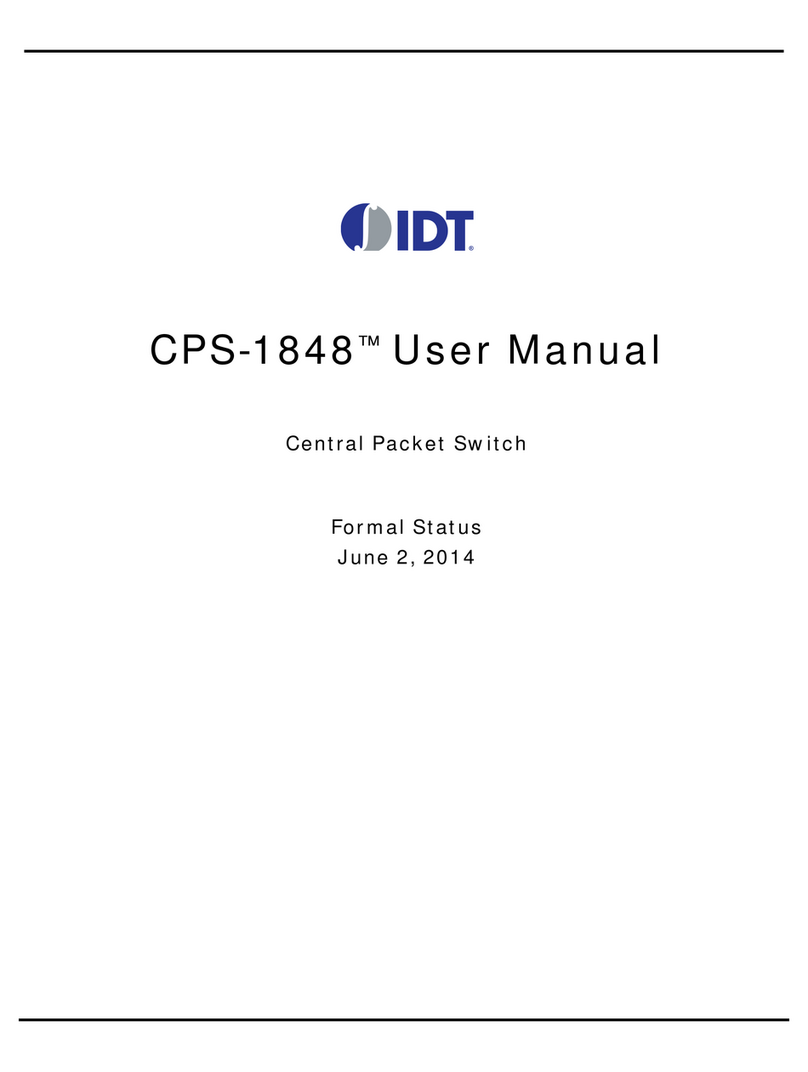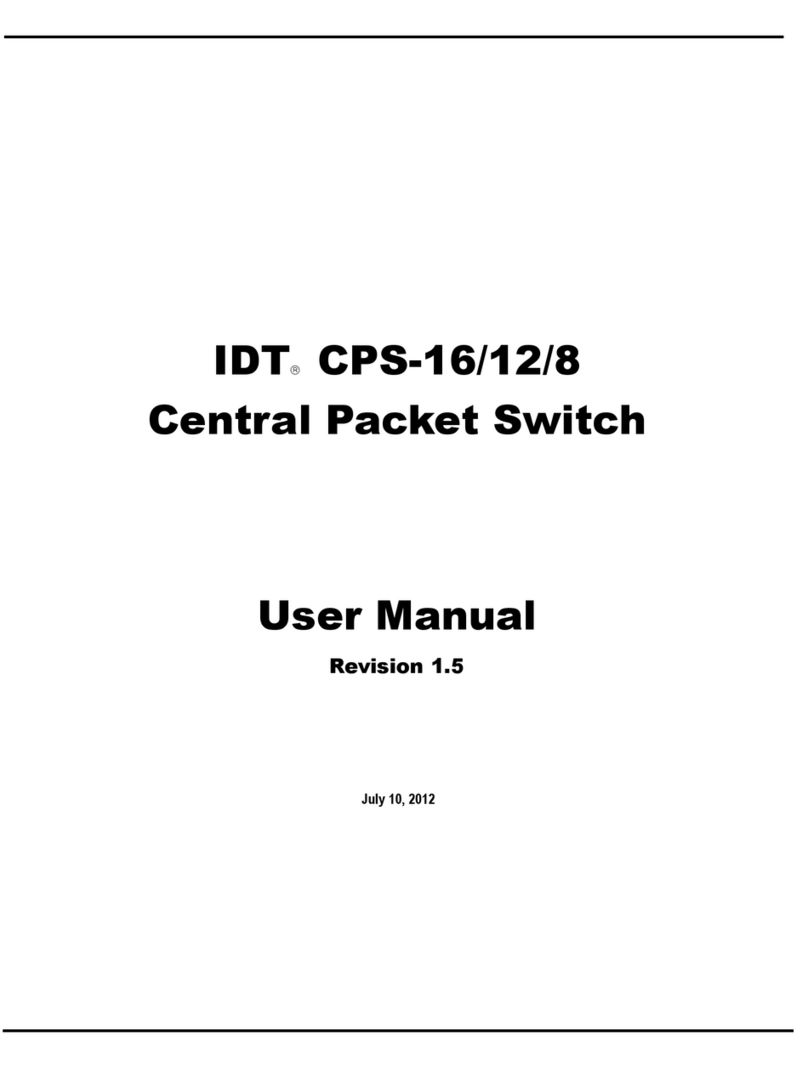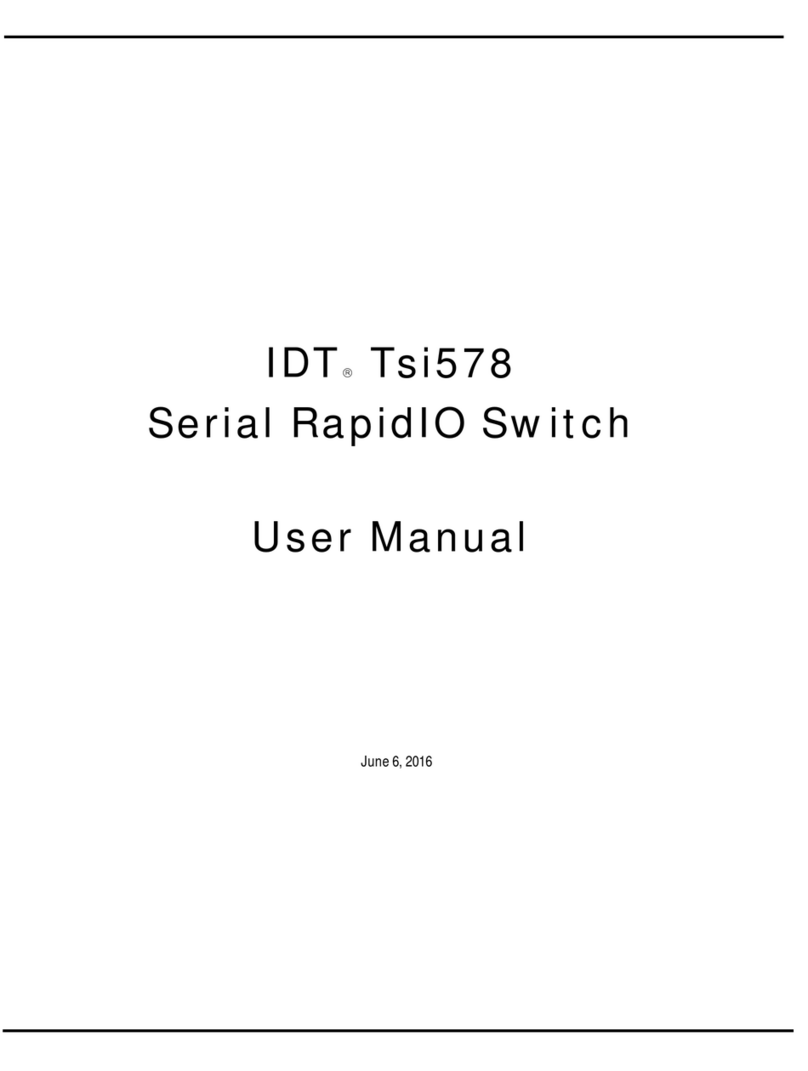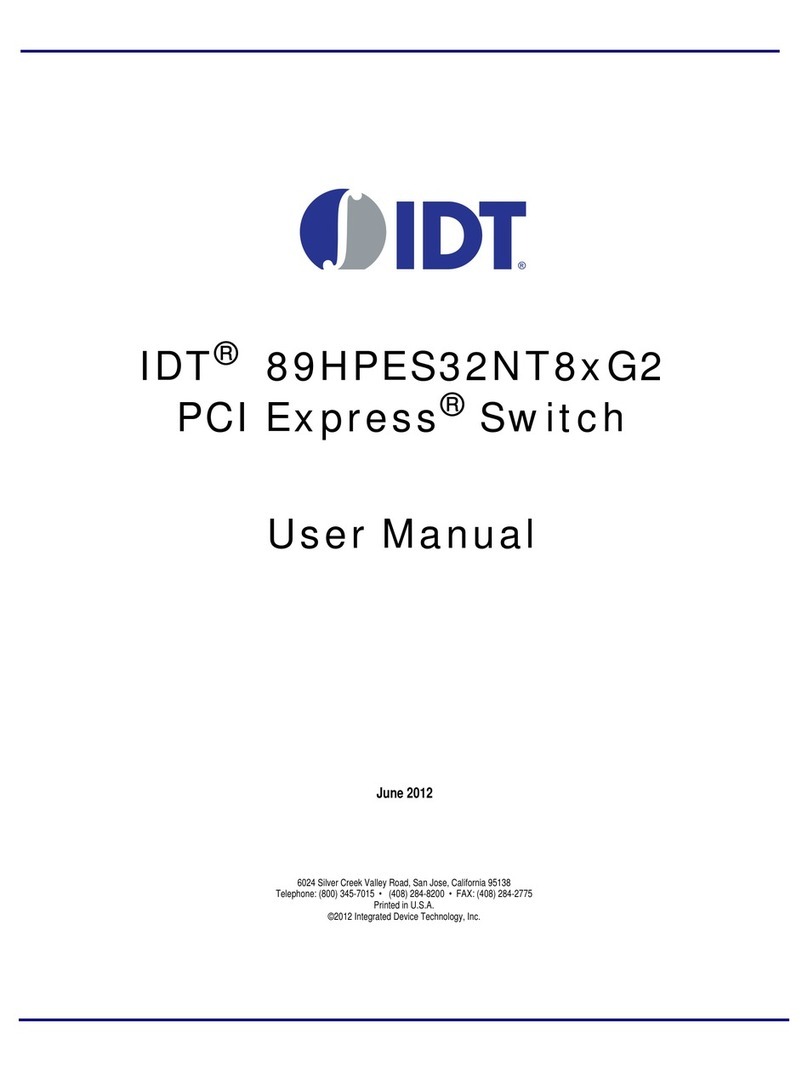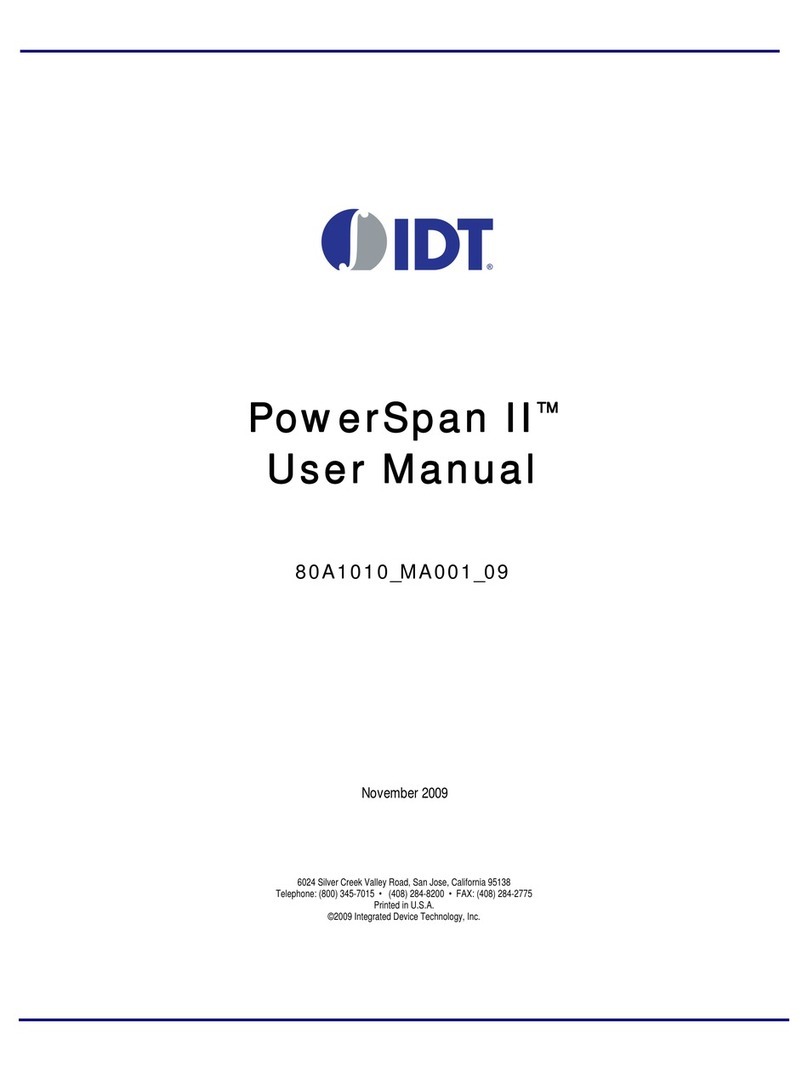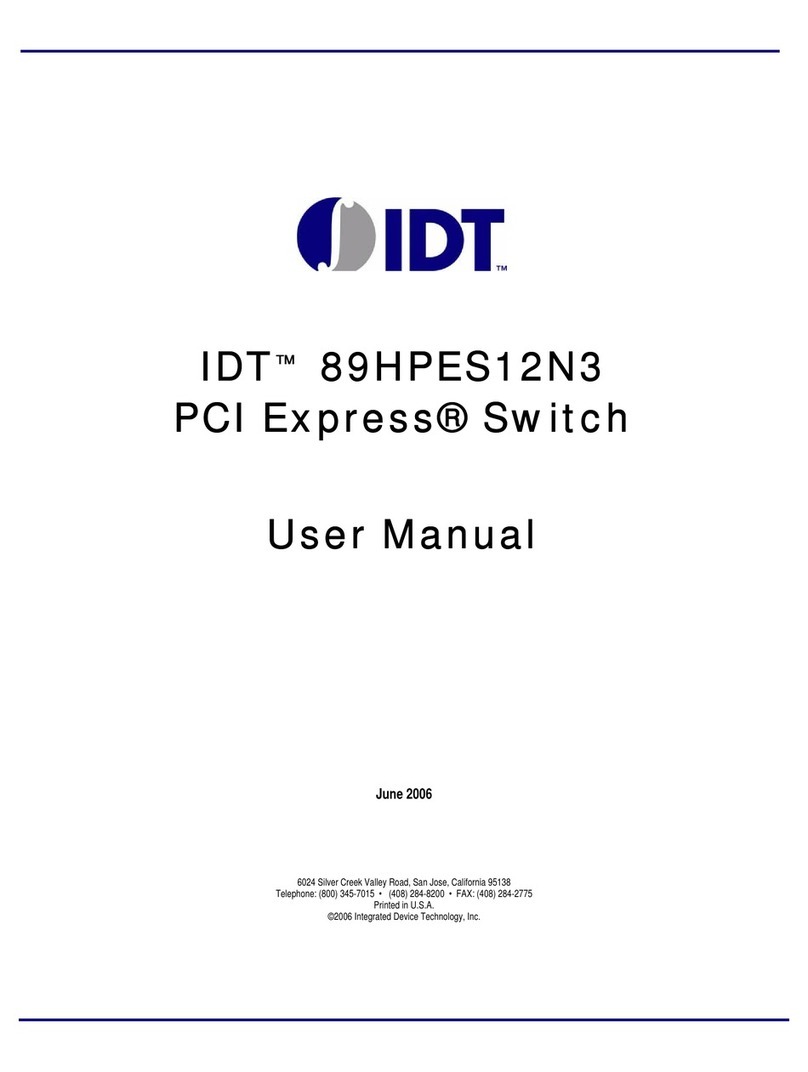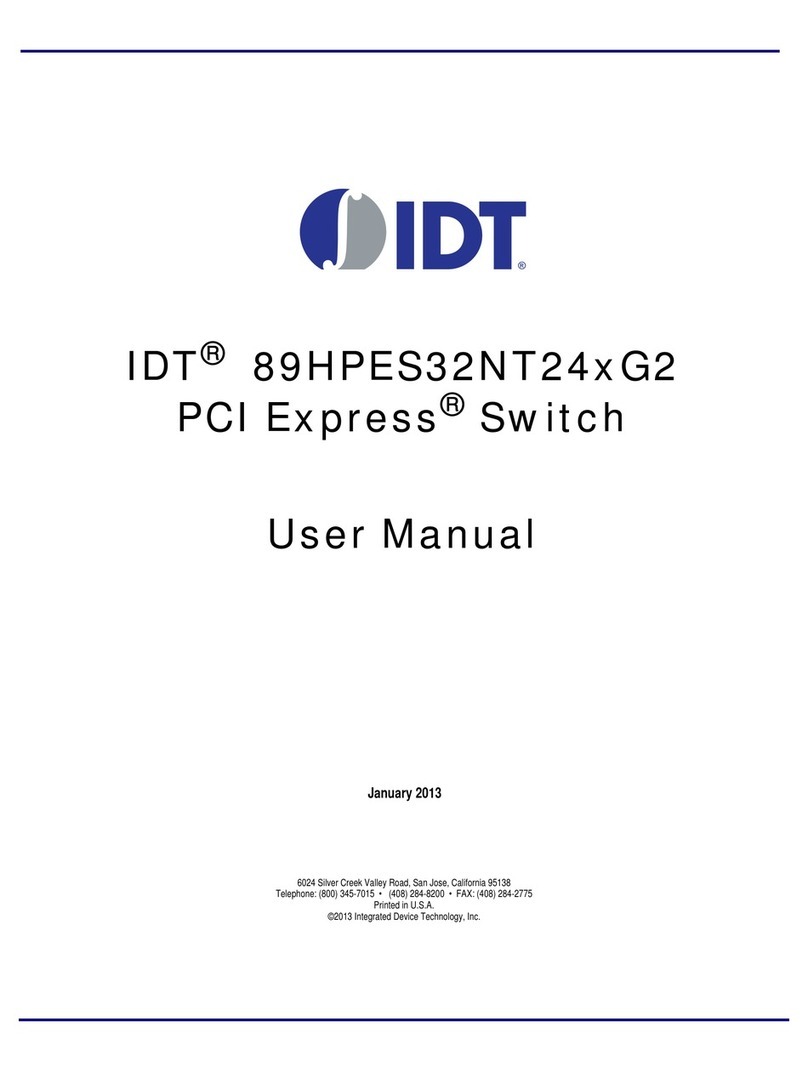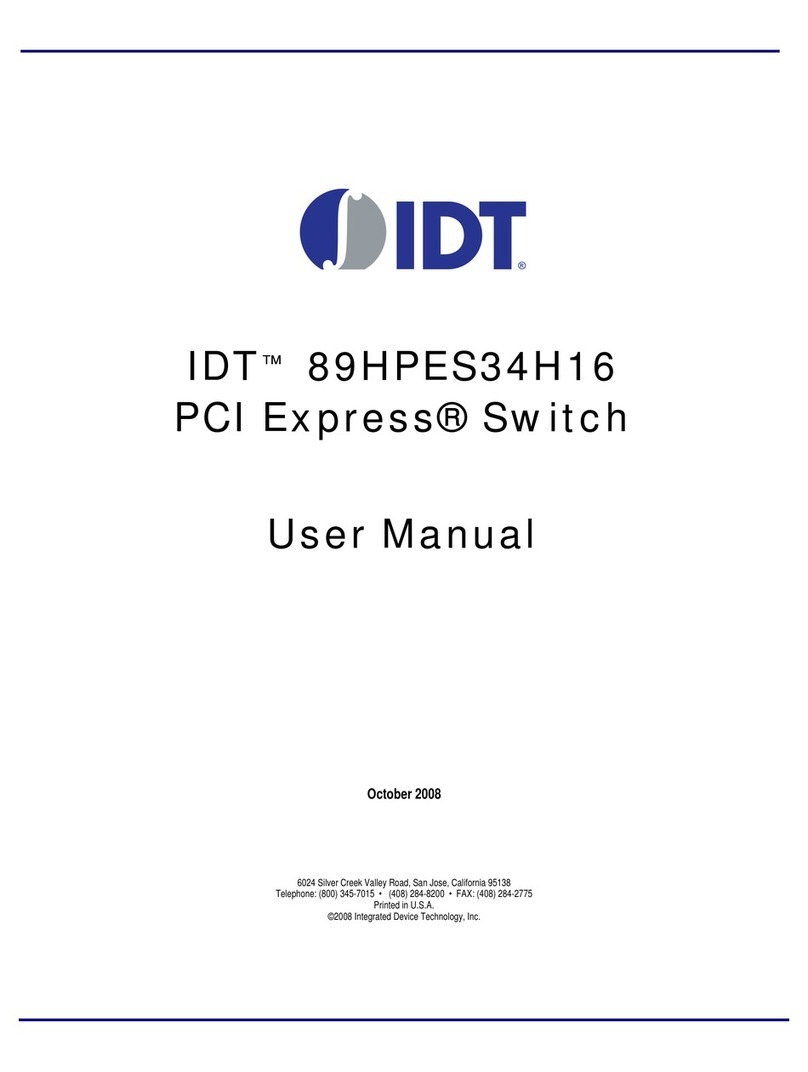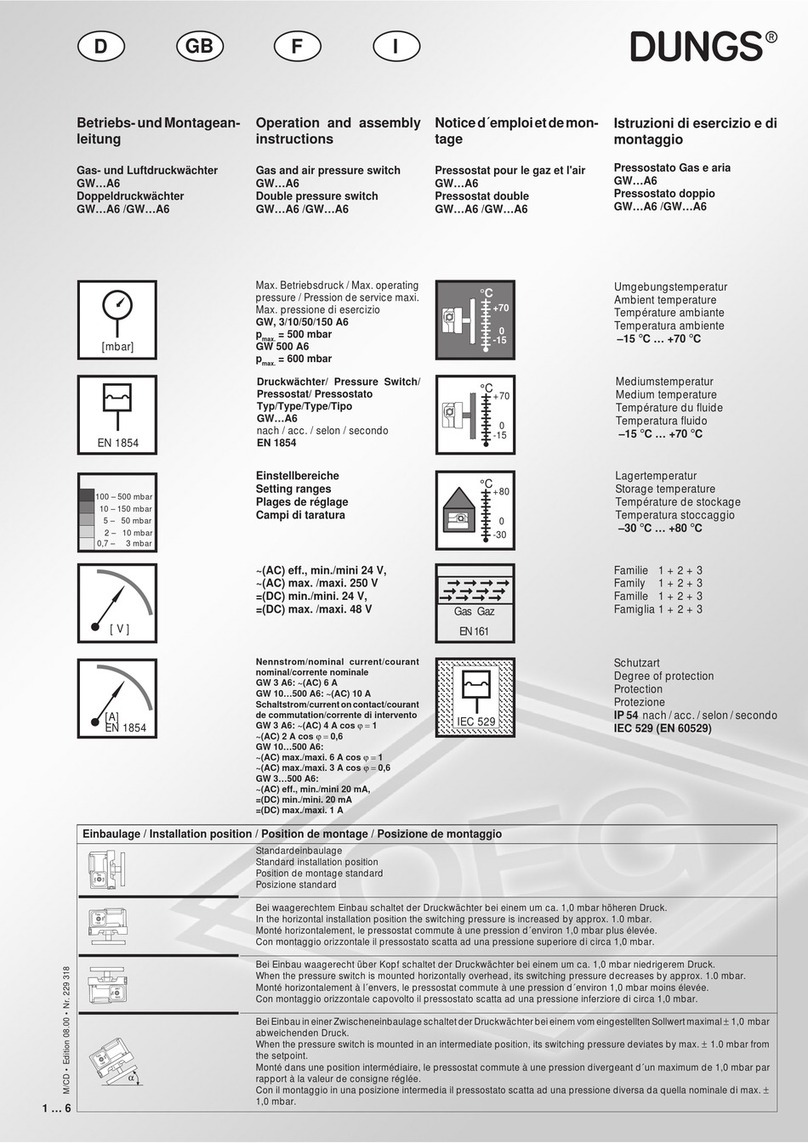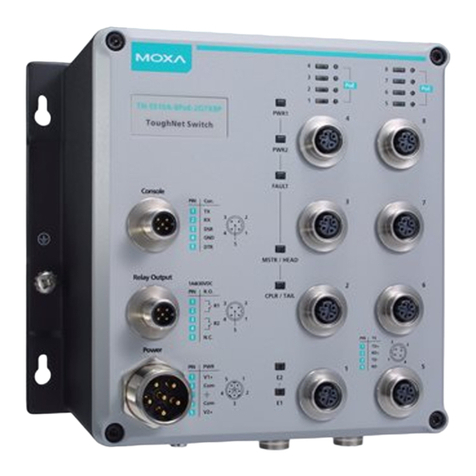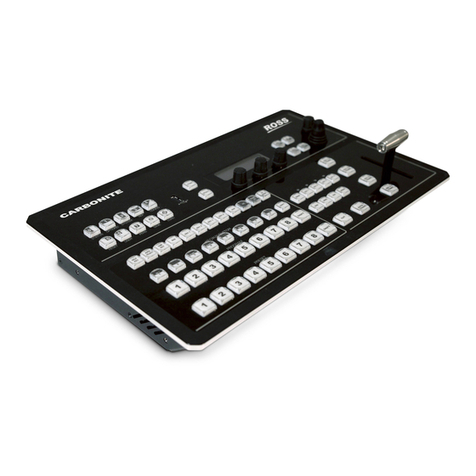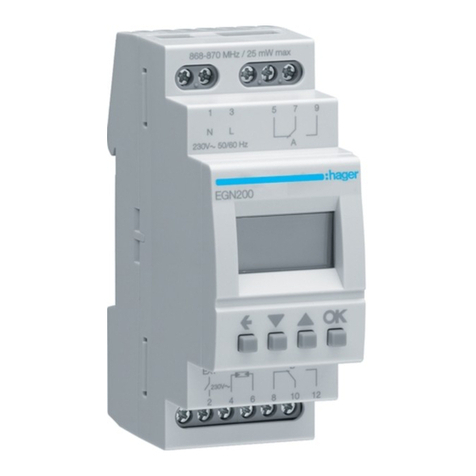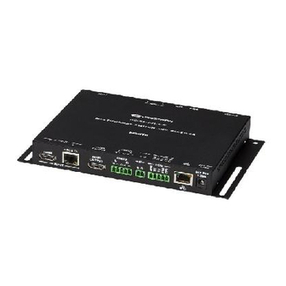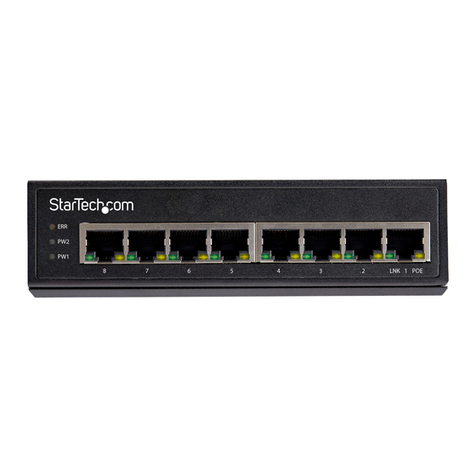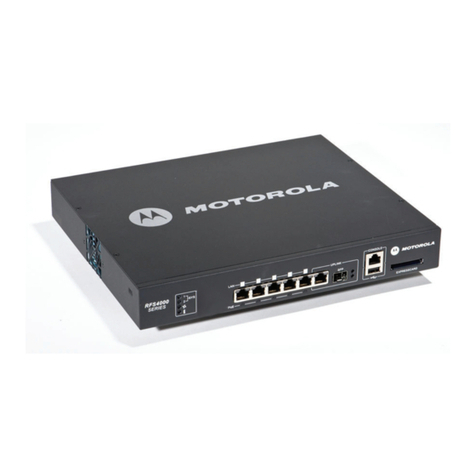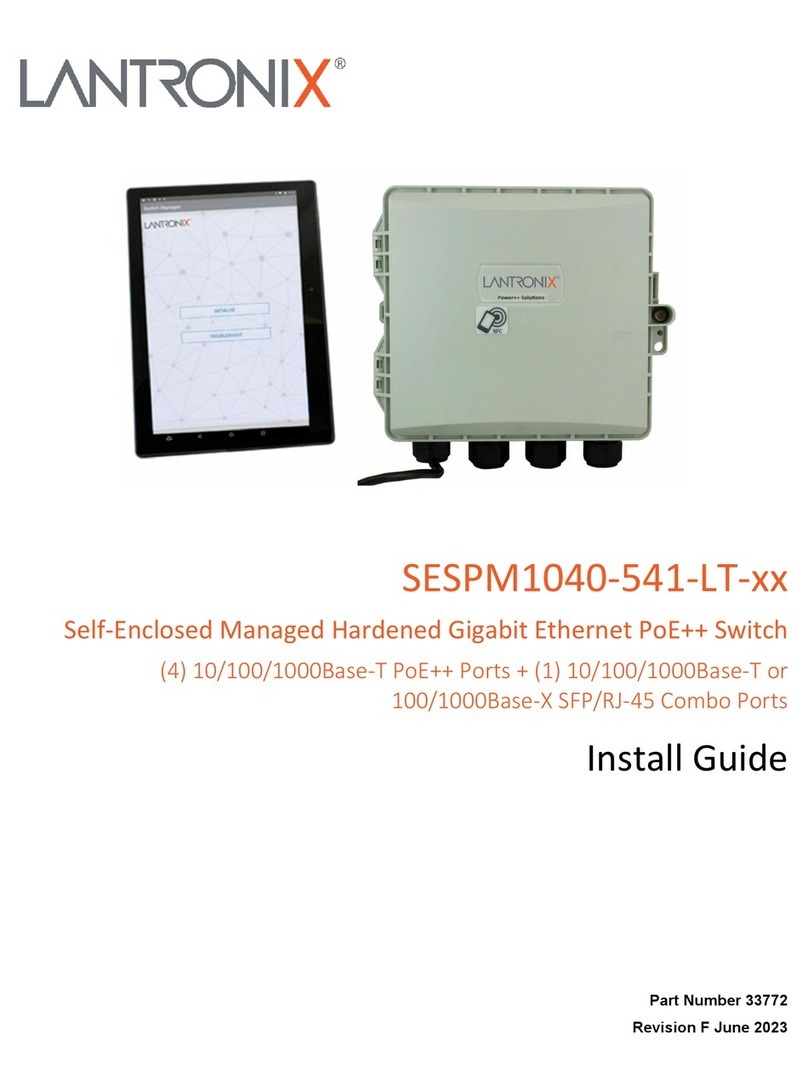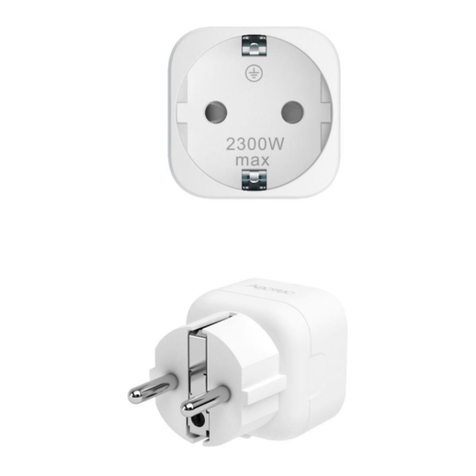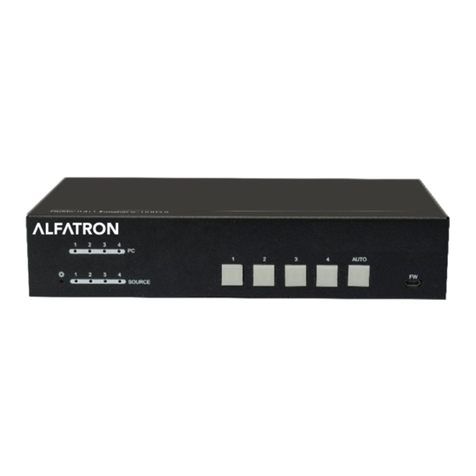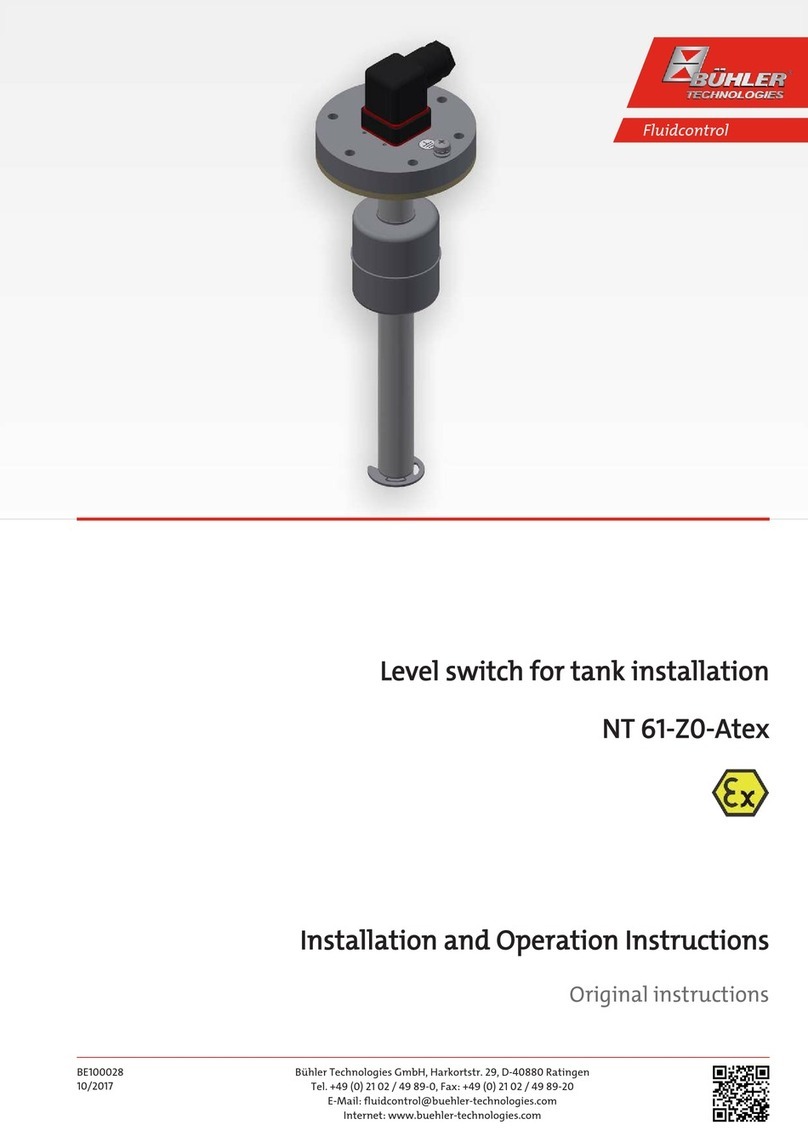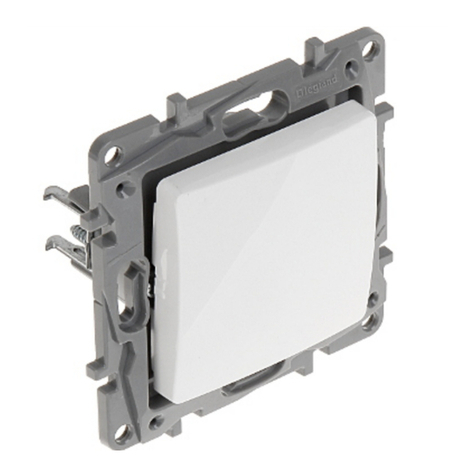IDT Tsi572 User manual

IDTTsi572
Serial RapidIO Switch
Hardware Manual
May 18, 2012
Titl

GENERAL DISCLAIMER
Integrated Device Technology, Inc. (“IDT”) reserves the right to make changes to its products or specifications at any time, without notice, in order to improve design or
performance.IDTdoesnotassumeresponsibilityforuseofanycircuitrydescribedhereinotherthanthecircuitryembodiedinanIDTproduct.Disclosureoftheinformation
herein does not convey a license or any other right, by implication or otherwise, in any patent, trademark, or other intellectual property right of IDT. IDT products may
contain errata which can affect product performance to a minor or immaterial degree. Current characterized errata will be made available upon request. Items identified
herein as “reserved” or “undefined” are reserved for future definition. IDT does not assume responsibility for conflicts or incompatibilities arising from the future definition
of such items. IDT products have not been designed, tested, or manufactured for use in, and thus are not warranted for, applications where the failure, malfunction, or
any inaccuracy in the application carries a risk of death, serious bodily injury, ordamage to tangible property. Code examples provided herein by IDT are for illustrative
purposes only and should not be relied upon for developing applications. Any use of such code examples shall be at the user's sole risk.
Copyright © 2012 Integrated Device Technology, Inc.
All Rights Reserved.
The IDT logo is registered to Integrated Device Technology, Inc. IDT and CPS are trademarks of Integrated Device Technology, Inc.

Tsi572 Hardware Manual
May 18, 2012
Integrated Device Technology
www.idt.com
3
Contents
1. Signals and Package . . . . . . . . . . . . . . . . . . . . . . . . . . . . . . . . . . . . . . . . . . . . . . . . . 9
1.1 Pinlist . . . . . . . . . . . . . . . . . . . . . . . . . . . . . . . . . . . . . . . . . . . . . . . . . . . . . . . . . . . . . . . . . . . . . . . 9
1.2 Signals . . . . . . . . . . . . . . . . . . . . . . . . . . . . . . . . . . . . . . . . . . . . . . . . . . . . . . . . . . . . . . . . . . . . . 10
1.3 Package Characteristics . . . . . . . . . . . . . . . . . . . . . . . . . . . . . . . . . . . . . . . . . . . . . . . . . . . . . . . . 24
1.4 Thermal Characteristics . . . . . . . . . . . . . . . . . . . . . . . . . . . . . . . . . . . . . . . . . . . . . . . . . . . . . . . . 27
2. Electrical Characteristics . . . . . . . . . . . . . . . . . . . . . . . . . . . . . . . . . . . . . . . . . . . . 29
2.1 Absolute Maximum Ratings. . . . . . . . . . . . . . . . . . . . . . . . . . . . . . . . . . . . . . . . . . . . . . . . . . . . . 29
2.2 Recommended Operating Conditions. . . . . . . . . . . . . . . . . . . . . . . . . . . . . . . . . . . . . . . . . . . . . . 30
2.3 Power . . . . . . . . . . . . . . . . . . . . . . . . . . . . . . . . . . . . . . . . . . . . . . . . . . . . . . . . . . . . . . . . . . . . . . 31
2.4 Electrical Characteristics . . . . . . . . . . . . . . . . . . . . . . . . . . . . . . . . . . . . . . . . . . . . . . . . . . . . . . . 34
3. Layout Guidelines . . . . . . . . . . . . . . . . . . . . . . . . . . . . . . . . . . . . . . . . . . . . . . . . . . 41
3.1 Overview . . . . . . . . . . . . . . . . . . . . . . . . . . . . . . . . . . . . . . . . . . . . . . . . . . . . . . . . . . . . . . . . . . . 41
3.2 Impedance Requirements . . . . . . . . . . . . . . . . . . . . . . . . . . . . . . . . . . . . . . . . . . . . . . . . . . . . . . . 41
3.3 Tracking Topologies. . . . . . . . . . . . . . . . . . . . . . . . . . . . . . . . . . . . . . . . . . . . . . . . . . . . . . . . . . . 42
3.4 Power Distribution . . . . . . . . . . . . . . . . . . . . . . . . . . . . . . . . . . . . . . . . . . . . . . . . . . . . . . . . . . . . 55
3.5 Decoupling Requirements . . . . . . . . . . . . . . . . . . . . . . . . . . . . . . . . . . . . . . . . . . . . . . . . . . . . . . 57
3.6 Clocking and Reset. . . . . . . . . . . . . . . . . . . . . . . . . . . . . . . . . . . . . . . . . . . . . . . . . . . . . . . . . . . . 61
3.7 Modeling and Simulation . . . . . . . . . . . . . . . . . . . . . . . . . . . . . . . . . . . . . . . . . . . . . . . . . . . . . . . 65
3.8 Testing and Debugging Considerations . . . . . . . . . . . . . . . . . . . . . . . . . . . . . . . . . . . . . . . . . . . . 66
3.9 Reflow Profile. . . . . . . . . . . . . . . . . . . . . . . . . . . . . . . . . . . . . . . . . . . . . . . . . . . . . . . . . . . . . . . . 69
A. Clocking . . . . . . . . . . . . . . . . . . . . . . . . . . . . . . . . . . . . . . . . . . . . . . . . . . . . . . . . . . 71
A.1 Line Rate Support. . . . . . . . . . . . . . . . . . . . . . . . . . . . . . . . . . . . . . . . . . . . . . . . . . . . . . . . . . . . . 71
A.2 P_CLK Programming. . . . . . . . . . . . . . . . . . . . . . . . . . . . . . . . . . . . . . . . . . . . . . . . . . . . . . . . . . 75
B. Ordering Information . . . . . . . . . . . . . . . . . . . . . . . . . . . . . . . . . . . . . . . . . . . . . . . . 87
B.1 Ordering Information . . . . . . . . . . . . . . . . . . . . . . . . . . . . . . . . . . . . . . . . . . . . . . . . . . . . . . . . . . 87
B.2 Part Numbering Information . . . . . . . . . . . . . . . . . . . . . . . . . . . . . . . . . . . . . . . . . . . . . . . . . . . . 87

4
Tsi572 Hardware Manual
May 18, 2012 Integrated Device Technology
www.idt.com

Tsi572 Hardware Manual
May 18, 2012
Integrated Device Technology
www.idt.com
5
About this Document
This section discusses general document information about the Tsi572. The following topics are
described:
•“Scope” on page 5
•“Document Conventions” on page 5
•“Revision History” on page 6
Scope
The Tsi572 Hardware Manual discusses electrical, physical, and board layout information for
the Tsi572. It is intended for hardware engineers who are designing system interconnect
applications with these devices.
Document Conventions
This document uses a variety of conventions to establish consistency and to help you quickly
locate information of interest. These conventions are briefly discussed in the following sections.
Non-differential Signal Notation
Non-differential signals are either active-low or active-high. An active-low signal has an active
state of logic 0 (or the lower voltage level), and is denoted by a lowercase “b”. An active-high
signal has an active state of logic 1 (or the higher voltage level), and is not denoted by a special
character. The following table illustrates the non-differential signal naming convention.
State Single-line signal Multi-line signal
Active low NAME_b NAMEn[3]
Active high NAME NAME[3]

6
Serial RapidIO Switch
May 18, 2012 Integrated Device Technology
www.idt.com
Differential Signal Notation
Differential signals consist of pairs of complement positive and negative signals that are
measured at the same time to determine a signal’s active or inactive state (they are denoted by
“_p” and “_n”, respectively). The following table illustrates the differential signal naming
convention.
Symbols
Revision History
May 18, 2012, Formal
• Updated the first paragraph in “Power Sequencing” on page 33
• Changed the SP_IO_SPEED setting in Table 21 for 125 MHz / 1.25 Baud rate to 1,1
November 18, 2010, Formal
• Added a note to Table 13
August 2009, Formal
This is the current release of the Serial RapidIO Switch. There have been no technical changes
to the document; the formatting has been updated to reflect IDT.
June 2009, Formal
Changes have been implemented throughout the document.
State Single-line signal Multi-line signal
Inactive NAME_p = 0
NAME_n = 1 NAME_p[3] = 0
NAME_n[3] =1
Active NAME_p = 1
NAME_n = 0 NAME_p[3] is 1
NAME_n[3] is 0
Tip
This symbol indicates a basic design concept or information considered helpful.
This symbol indicates important configuration information or suggestions.
This symbol indicates procedures or operating levels that may result in misuse or
damage to the device.

Tsi572 Hardware Manual
May 18, 2012
Integrated Device Technology
www.idt.com
7
July 2008, Advance
The changes to this documents includes adding industrial variants of the device to “Ordering
Information” on page 87.
June 2008, Advance
This was the first version of the Serial RapidIO Switch.

8
Serial RapidIO Switch
May 18, 2012 Integrated Device Technology
www.idt.com

9
Tsi572 Hardware Manual
May 18, 2012
Integrated Device Technology
www.idt.com
1. Signals and Package
This chapter describes the packaging (mechanical) features for the Tsi572. It includes the
following information:
•“Pinlist” on page 9
•“Signals” on page 10
•“Package Characteristics” on page 24
•“Thermal Characteristics” on page 27
1.1 Pinlist
The pinlist and ballmap information for the Tsi572 are available by visiting www.idt.com. For
more information, see the following documents:
• Tsi572 Pinlist
• Tsi572 Ballmap

10
Tsi572 Hardware Manual
May 18, 2012 Integrated Device Technology
www.idt.com
1.2 Signals
Figure 1: Signal Grouping
1
1
1
1
TRST_b
1
1
1
1
JTAG
TAP
I
2
C
TCK
TDI
TDO
TMS
TRST_b
I2C_SCLK
I2C_SD
1
1
HARD_RST_b
SW_RST_b 1
INT_b
Reset
2RefClks
S_CLK_[p,n] 1
P_CLK
VSS
VDD
Interrupt
VDD_IO
1
I2C_DISABLE
I2C_MA
I2C_SEL 2
I2C_SA[1,0]
1
1
1
BCE
1
MCES Multicast event
Control symbol
2
REF_AVDD
SP_IO_SPEED[1:0]
Port
Configuration 2
Ports{0,2,4,6}
SP_VDD
SP{2,4}_T[A,B]_[p,n]
16
SP_VDD
SP0_T[A,B,C,D]_[p,n]
SP0_R[A,B,C,D]_[p,n]
SP0_REXT
8
8
SP0_MODESEL
1
1
SP1_PWRDN
1
SP{2,4}_R[A,B]_[p,n]
SP{2,4}_REXT
SP{2,4}_PWRDN
4
4
SP{3,5}_PWRDN
4
SP6_T[A,B,C,D]_[p,n]
SP6_R[A,B,C,D]_[p,n]
SP6_REXT
8
8
SP6_MODESEL
1
1
SP7_PWRDN
1SP6_PWRDN
1
Ports{0,2,4,6}
SP_AVDD SP_AVDD
VSS
VDD
VDD_IO
REF_AVDD
4x Mode:0
1x Mode: 0,1
Ports
4x Mode:6
1x Mode: 6,7
Ports
1x Mode: 2,3,4,5
Ports
TX_SWAP
RX_SWAP
1
1
4x Mode Lane Swap
16

11
Tsi572 Hardware Manual
May 18, 2012
Integrated Device Technology
www.idt.com
1.2.1 Conventions
The following conventions are used in the signal description table:
• Signals with the suffix “_p” are the positive half of a differential pair.
• Signals with the suffix “_n” are the negative half of a differential pair.
• Signals with the suffix “_b” are active low.
Signals are classified according to the types defined in Table 1.
1.2.2 Endian Ordering
This document follows the bit-numbering convention adopted by RapidIO Interconnect
Specification (Revision 1.3), where [0:7] is used to represent an 8 bit bus with bit 0 as the
most-significant bit.
Table 1: Signal Types
Pin Type Definition
I Input
O Output
I/O Input/Output
OD Open Drain
SRIO Differential driver/receiver defined by RapidIO
Interconnect Specification (Revision 1.3)
PU Pulled Up internal to the Tsi572
PD Pulled Down internal to the Tsi572
LVTTL CMOS I/O with LVTTL thresholds
Hyst Hysteresis
Core Power Core supply
Core Ground Ground for core logic
I/O Power I/O supply
N/C No connect
These signals must be left unconnected.

12
Tsi572 Hardware Manual
May 18, 2012 Integrated Device Technology
www.idt.com
1.2.3 Port Numbering
The following table shows the mapping between port numbers and the physical ports. These port
numbers are used within the destination ID lookup tables for ingress RapidIO ports and in numerous
register configuration fields.
Table 2: Port Numbering
Port Number RapidIO Port Mode
0 Serial Port 0 (SP0) 1x or 4x
1 Serial Port 1 (SP1) 1x
2 Serial Port 2 (SP2) 1x
3 Serial Port 3 (SP3) 1x
4 Serial Port 4 (SP4) 1x
5 Serial Port 5 (SP5) 1x
6 Serial Port 6 (SP6) 1x or 4x
7 Serial Port 7 (SP7) 1x

13
Tsi572 Hardware Manual
May 18, 2012
Integrated Device Technology
www.idt.com
1.2.4 Signal Grouping
The following table lists the signals by group and their recommended termination.
Table 3: Signal Descriptions and Recommended Termination
Pin Name Type Description Recommended
Terminationa
Signal Port Numbering
n = 0, 2, 4, 6
Serial Port Transmit
SP{n}_TA_p O, SRIO Port n Lane A Differential Non-inverting Transmit
Data output (4x mode)
Port n Lane A Differential Non-inverting Transmit
Data output (1x mode)
No termination required.
SP{n}_TA_n O, SRIO Port n Lane A Differential Inverting Transmit Data
output (4x mode)
Port n Lane A Differential Inverting Transmit Data
output (1x mode)
No termination required.
SP{n}_TB_p O, SRIO Port n Lane B Differential Non-inverting Transmit
Data output (4x mode)
Port n+1 Lane B Differential Non-inverting
Transmit Data output (1x mode)
No termination required.
SP{n}_TB_n O, SRIO Port n Lane B Differential Inverting Transmit Data
output (4x mode)
Port n+1 Lane B Differential Inverting Transmit
Data output (1x mode)
No termination required.
SP[0,6]_TC_p O, SRIO Port n Lane C Differential Non-inverting Transmit
Data output (4x mode) No termination required.
SP[0,6]_TC_n O, SRIO Port n Lane C Differential Inverting Transmit Data
output(4x mode) No termination required.
SP[0,6]_TD_p O, SRIO Port n Lane D Differential Non-inverting Transmit
Data output (4x mode) No termination required.
SP[0,6]__TD_ O, SRIO Port n Lane D Differential Inverting Transmit Data
output (4x mode) No termination required.

14
Tsi572 Hardware Manual
May 18, 2012 Integrated Device Technology
www.idt.com
Serial Port Receive
SP{n}_RA_p I, SRIO Port n Lane A Differential Non-inverting Receive
Data input (4x node)
Port n Lane A Differential Non-inverting Receive
Data input (1x mode)
DC blocking capacitor of
0.1uF in series
SP{n}_RA_n I, SRIO Port n Lane A Differential Inverting Receive Data
input (4x mode)
Port n Lane A Differential Inverting Receive Data
input (1x mode)
DC blocking capacitor of
0.1uF in series
SP{n}_RB_p I, SRIO Port n Lane B Differential Non-inverting Receive
Data input (4x mode)
Port n+1 Lane B Differential Non-inverting
Receive Data input (1x mode)
DC blocking capacitor of
0.1uF in series
SP{n}_RB_n I, SRIO Port n Lane B Differential Inverting Receive Data
input (4x mode)
Port n+1 Lane B Differential Inverting Receive
Data input (1x mode)
DC blocking capacitor of
0.1uF in series
SP[0,6]_RC_p I, SRIO Port n Lane C Differential Non-inverting Receive
Data input(4x mode) DC blocking capacitor of
0.1uF in series
SP[0,6]_RC_n I, SRIO Port n Lane C Differential Inverting Receive Data
input (4x mode) DC blocking capacitor of
0.1uF in series
SP[0,6]_RD_p I, SRIO Port n Lane D Differential Non-inverting Receive
Data input(4x mode) DC blocking capacitor of
0.1uF in series
SP[0,6]_RD_n I, SRIO Port n Lane D Differential Inverting Receive Data
input (4x mode) DC blocking capacitor of
0.1uF in series
Table 3: Signal Descriptions and Recommended Termination
Pin Name Type Description Recommended
Terminationa

15
Tsi572 Hardware Manual
May 18, 2012
Integrated Device Technology
www.idt.com
Serial Port Configuration
SP{n}_REXT Analog Used to connect a resistor to VSS to provide a
reference current for the driver and equalization
circuits.
Must be connected to VSS
with a 191-ohm (1%)
resistor.
SP{n}_MODESEL I/O,
LVTTL,
PD
Selects the serial port operating mode for ports
0and 6
0 = Port 0 or 6 operating in 4x mode
1 = Ports n and n+1 operating in 1x mode
Note: Output capability of this pin is only used in
test mode.
Must remain stable for 10 P_CLK cycles after
HW_RST_b is de-asserted in order to be sampled
correctly.
This signal is ignored after reset.
Pin must be tied off
according to the required
configuration. Either a 10K
pull up to VDD_IO or a
10K pull-down to VSS_IO.
Internal pull-down may be
used for logic 0.
SP{n}_PWRDN I/O,
LVTTL,
PU
Port n Transmit and Receive Power Down control
This signal controls the state of Port n and Port
n+1
The PWRDN controls the state of all four lanes
(A/B/C/D) of SERDES Macro.
0 = Port n Powered Up. Port n+1 controlled by
SP{n+1}_PWRDN.
1 = Port n Powered Down. Port n+1 Powered
Down.
Override SP{n}_PWRDN using PWDN_x1 field in
“SRIO MAC x Clock Selection Register” in the
Tsi572 User Manual.
Output capability of this pin is only used in test
mode.
Must remain stable for 10 P_CLK cycles after
HW_RST_B is de-asserted in order to be sampled
correctly.
This signal is ignored after reset.
Pin must be tied off
according to the required
configuration. Either a 10K
pull up to VDD_IO or a
10K pull-down to VSS_IO.
Internal pull-up may be
used for logic 1.
Table 3: Signal Descriptions and Recommended Termination
Pin Name Type Description Recommended
Terminationa

16
Tsi572 Hardware Manual
May 18, 2012 Integrated Device Technology
www.idt.com
SP{n+1}_PWRDN I/O,
LVTTL,
PU
Port n+1 Transmit and Receive Power Down
control
This signal controls the state of Port n+1. Note
that Port n+1 is never used when 4x mode is
selected for a Serial Rapid IO MAC, and it must
be powered down.
0 = Port n+1 Powered Up
1 = Port n+1 Powered Down
Override SP{n+1}_PWRDN using PWDN_x4 field
SRIO MAC x Clock Selection Register.
Output capability of this pin is only used in test
mode.
Must remain stable for 10 P_CLK cycles after
HW_RST_B is de-asserted in order to be sampled
correctly.
This signal is ignored after reset.
Pin must be tied off
according to the required
configuration. Either a 10K
pull up to VDD_IO or a
10K pull-down to VSS_IO.
Internal pull-up may be
used for logic 1.
Table 3: Signal Descriptions and Recommended Termination
Pin Name Type Description Recommended
Terminationa

17
Tsi572 Hardware Manual
May 18, 2012
Integrated Device Technology
www.idt.com
Serial Port Speed Select
SP_IO_SPEED[1] I/O,
LVTTL,
PU
Serial Port Transmit and Receive operating
frequency select, bit 1. When combined with
SP_IO_SPEED[0], this pin selects the default
serial port frequency for all ports.
00 = 1.25 Gbit/s
01 = 2.5 Gbit/s
10 = 3.125 Gbit/s (default)
11 = Illegal
Selects the speed at which the ports operates
when reset is removed. This could be at either
HARD_RST_b being de-asserted or by the
completion of a self-reset.
These signals must remain stable for 10 P_CLK
cycles after HW_RST_b is de-asserted in order to
be sampled correctly.
These signals are ignored after reset and
software is able to over-ride the port frequency
setting in the SRIO MAC x Digital Loopback and
Clock Selection register.
The SP_IO_SPEED[1:0] setting is equal to the
IO_SPEED field in SRIO MAC x Clock Selection
Register.
Output capability of this pin is only used in test
mode.
Pin must be tied off
according to the required
configuration. Either a 10K
pull-up to VDD_IO or a
10K pull-down to VSS_IO.
Internal pull-down may be
used for logic 0.
SP_IO_SPEED[0] I/O,
LVTTL,
PD
See SP_IO_SPEED[1] Pin must be tied off
according to the required
configuration. Either a 10K
pull-up to VDD_IO or a
10K pull-down to VSS_IO.
Internal pull-up may be
used for logic 1.
Table 3: Signal Descriptions and Recommended Termination
Pin Name Type Description Recommended
Terminationa

18
Tsi572 Hardware Manual
May 18, 2012 Integrated Device Technology
www.idt.com
Serial Port Lane Ordering Select
SP_RX_SWAP I, LVTTL,
PD Configures the order of 4x receive lanes on serial
ports [0,6]
0 = A, B, C, D
1 = D, C, B, A
This signal is ignored in 1X mode.
Must remain stable for 10 P_CLK cycles after
HARD_RST_b is de-asserted in order to be
sampled correctly.
This signal is ignored after reset.
Note: Ports that require the use of lane swapping
for ease of routing will only function as 4x mode
ports. The re-configuration of a swapped port to
dual 1x mode operation results in the inability to
connect to a 1x mode link partner.
No termination required.
Internal pull-down can be
used for logic 0. Pull up to
VDD_IO through 10K if
external pull-up is desired.
Pull down to VSS_IO
through a 10K resistor if an
external pull-down is
desired.
SP_TX_SWAP I, LVTTL,
PD Configures the order of 4x transmit lanes on serial
ports [0,6].
0 = A, B, C, D
1 = D, C, B, A
Must remain stable for 10 P_CLK cycles after
HARD_RST_b is de-asserted in order to be
sampled correctly.
This signal is ignored after reset.
Note: Ports that require the use of lane swapping for
ease of routing only function as 4x mode ports. The
re-configuration of a swapped port to dual 1x mode
operation results in the inability to connect to a 1x
mode link partner.
No termination required.
Internal pull-down can be
used for logic 0. Pull up to
VDD_IO through 10K if
external pull-up is desired.
Pull down to VSS_IO
through 10K resistor if an
external pull-down is
desired.
Clock and Reset
P_CLK I,
LVTTL This clock is used for the register bus clock.
The nominal frequency of this input clock is
100 MHz. For more information on programming
the P_CLK operating frequency, refer to “P_CLK
Programming” on page 75.
No termination required.
Table 3: Signal Descriptions and Recommended Termination
Pin Name Type Description Recommended
Terminationa

19
Tsi572 Hardware Manual
May 18, 2012
Integrated Device Technology
www.idt.com
S_CLK_p I,
CML Differential non-inverting reference clock. The
clock is used for following purposes: SERDES
reference clock, serial port system clock, ISF
clock and test clock.
The maximum frequency of this input clock is
156.25 MHz.
The clock frequency is defined in “Reference
Clock, S_CLK_p/n” on page 35.
For more information on the S_CLK operating
frequency, refer to “Line Rate Support” on
page 71.
AC coupling capacitor of
0.1uF required.
S_CLK_n I,
CML Differential inverting reference clock. The clock is
used for following purposes: SerDes reference
clock, serial port system clock, ISF clock and test
clock.
The maximum frequency of this input clock is
156.25 MHz.
The clock frequency is defined in “Reference
Clock, S_CLK_p/n” on page 35.
For more information on the S_CLK operating
frequency, refer to “Line Rate Support” on
page 71.
AC coupling capacitor of
0.1uF required.
HARD_RST_b I
LVTTL,
Hyst,
PU
Schmidt-triggered hard reset. Asynchronous
active low reset for the entire device.
The Tsi572 does not contain a voltage detector to
generate internal reset.
Connect to a power-up
reset source.
Refer to “Reset
Requirements” on page 64
Interrupts
INT_b O, OD,
LVTTL,
2mA
Interrupt signal (open drain output) External pull-up required.
Pull up to VDD_IO through
a 10K resistor.
Table 3: Signal Descriptions and Recommended Termination
Pin Name Type Description Recommended
Terminationa

20
Tsi572 Hardware Manual
May 18, 2012 Integrated Device Technology
www.idt.com
SW_RST_b O, OD,
LVTTL,
2mA
Software reset (open drain output): This signal is
asserted when a RapidIO port receives a valid
reset request on a RapidIO link. If self-reset is not
selected, this pin remains asserted until the reset
request is cleared from the status registers. If
self-reset is selected, this pin remains asserted
until the self reset is complete. If the Tsi572 is
reset from the HARD_RST_b pin, this pin is
de-asserted and remains de-asserted after
HARD_RST_b is released.
For more information, refer to “Resets” in the
Tsi572 User’s Manual.
External pull-up required.
Pull up to VDD_IO through
a 10K resistor.
Multicast
MCES I/O,
LVTTL,
PD
Multicast Event Symbol pin.
As an input, an edge (rising or falling) will trigger a
Multicast Event Control Symbol will be sent to all
ports;
As an output, this pin will toggle its value every
time an Multicast Event Control Symbol is
received by any port which is enabled for
Multicast even control symbols.
Must remain stable for 10 P_CLK cycles before
and after a transition.
No termination required.
This pin must not be driven
by an external source until
all power supply rails are
stable.
I2C
I2C_SCLK I/O, OD,
LVTTL,
PU
8mA
I2C input/output clock, up to 100 kHz.
If an EEPROM is present on the I2C bus, this
clock signal must be connected to the clock input
of the serial EEPROM on the I2C bus. If an
EEPROM is not present, the recommended
terminations should be used.
No termination required.
Internal pull-up may be
used for logic 1.
Pull up to VDD_IO through
a minimum 470 ohms
resistor if higher edge rate
is required.
I2C_SD I/O, OD,
LVTTL,
PU
8mA
I2C input and output data bus (bidirectional open
drain) No termination required.
Internal pull-up may be
used for logic 1.
Pull up to VDD_IO through
a minimum 470 ohms
resistor if higher edge rate
required.
Table 3: Signal Descriptions and Recommended Termination
Pin Name Type Description Recommended
Terminationa
Table of contents
Other IDT Switch manuals
